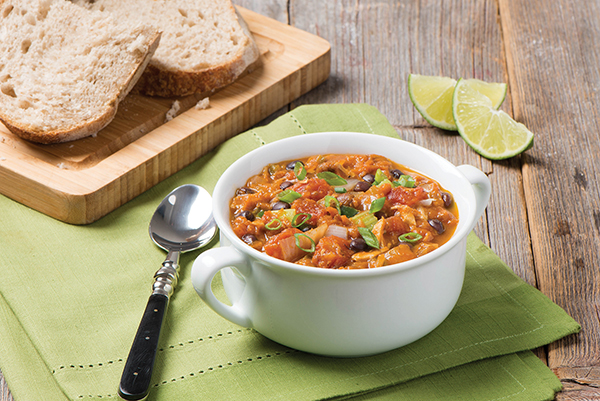Cooking with canned foods combines convenience and nutrition
(Family Features) Simple, convenient and versatile, canned foods provide an array of options for families looking to increase nutrition during mealtimes. However, some home chefs may not be aware of the benefits canned foods bring to the table.
Consider these common consumer misnomers cleared up by the Canned Food Alliance:
Myth: Canned foods don’t count toward dietary goals.
Fact: Canned foods provide important nutrients that deliver on the USDA’s Dietary Guidelines, as all forms of fruits, vegetables, beans, meats and seafood – whether fresh, frozen, canned or dried – are recommended to help ensure a proper balance of nutrients. In fact, according to a survey conducted by the Canned Food Alliance, 95 percent of health professionals surveyed agree that all forms of food, including canned, can help consumers meet the USDA’s MyPlate fruit and vegetable recommendations.
Myth: Canned foods aren’t as nutritious as fresh or frozen foods.
Fact: Research published in the “Journal of the Science of Food and Agriculture” shows canned foods can be as nutritious, and in some cases more nutritious, than fresh and frozen counterparts.
Myth: Canned foods are filled with preservatives.
Fact: Because canned foods have already been cooked, preservatives aren’t necessary to prevent spoilage. The canning process itself preserves the food.
Myth: Canned foods are highly processed.
Fact: Once canned fruits and vegetables are picked and packed near peak ripeness, they’re cooked quickly at high temperatures to lock in nutrients, similar to the home-canning process.
Myth: Canned foods are high in sodium.
Fact: Salt and sodium aren’t required for preservation of canned foods, and low- and no-sodium canned food options are available. Additionally, draining and rinsing canned foods can further reduce sodium by up to 41 percent.
Find more canned food facts and recipes at mealtime.org.

Chipotle Pumpkin Black Bean Chili
Recipe courtesy of the Canned Food Alliance
Prep time: 20 minutes
Cook time: 60-70 minutes
Servings: 4-6
-
2 tablespoons vegetable oil
-
1 onion, chopped
-
1 rib celery, chopped
-
2 jalapenos, seeded and chopped
-
3 cloves garlic, minced
-
1 teaspoon ground cumin
-
1 teaspoon dried oregano
-
1/4 teaspoon ground pepper
-
2 tablespoons tomato paste
-
1 can (28 ounces) no-salt added canned diced tomatoes
-
1 cup canned pureed pumpkin
-
1 cup no-salt-added canned chicken broth
-
1 can no-salt-added canned black beans, drained and rinsed
-
1 can (12 1/2 ounces) no-salt-added chicken, drained
-
1 chipotle in adobo sauce, finely chopped
-
1 teaspoon brown sugar
-
salt, to taste
-
2 green onions, finely chopped
-
lime wedges, for serving
-
In Dutch oven or large saucepan over medium heat, heat oil. Add onions, celery, jalapenos, garlic, cumin, oregano and pepper. Cook, stirring, 5-8 minutes, or until vegetables soften. Add tomato paste and cook 2 minutes.
-
Add tomatoes, pumpkin puree, chicken broth, black beans, chicken, chipotles and brown sugar. Bring to boil. Reduce heat to low. Simmer, stirring occasionally, 1 hour, or until chili thickens. Add salt, to taste.
-
Garnish with green onions and serve with lime wedges.
Tip: Add preferred canned beans, such as white kidney beans, pinto or Romano beans, in place of or in addition to black beans.
Nutritional information per serving: 240 calories; 6 g fat; 35 mg cholesterol; 210 mg sodium; 29 g carbohydrates; 8 g fiber; 8 g sugar; 18 g protein; 7,390 IU vitamin A; 35 mg vitamin C; 98 mg calcium; 3.2 mg iron.
SOURCE:
Canned Food Alliance







